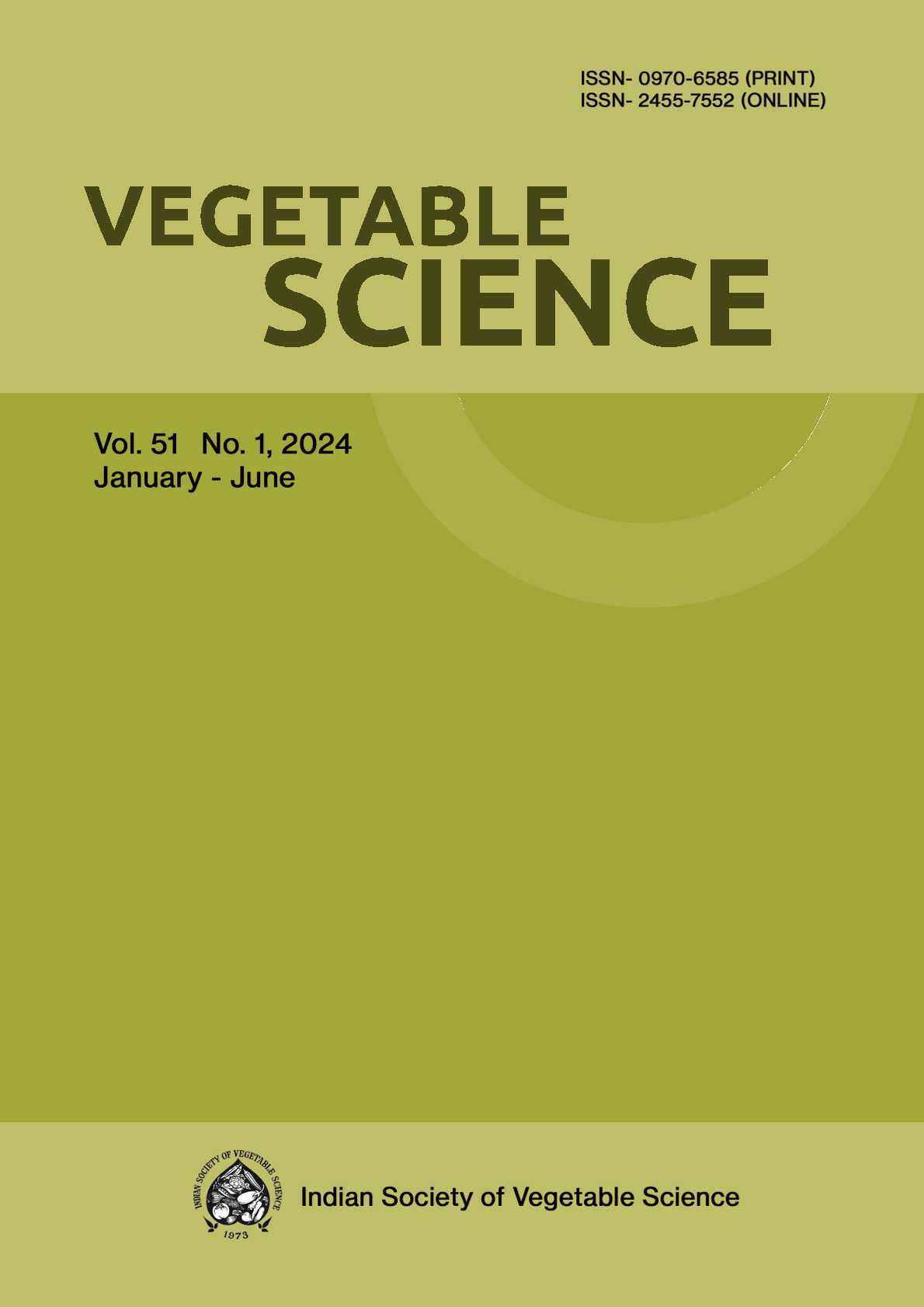Variability and genetic divergence studies in red cabbage (Brassica oleracea var. capitata f. rubra) under North-Western Himalayas
DOI:
https://doi.org/10.61180/vegsci.2024.v51.i1.10Keywords:
Crop improvement, Genetic divergence, Heritability, Red cabbage, VariabilityAbstract
This investigation was conducted at the Experimental Research Farm of the Department of Vegetable Science, Dr. YS Parmar University of Horticulture and Forestry, Nauni, Solan, Himachal Pradesh, to work out the variability and genetic divergence among twenty-eight genotypes of red cabbage. Analysis of variability revealed high phenotypic and genotypic coefficients of variation for the trait number of non-wrapper leaves, while these were moderate for net head weight, stalk length, core length, and vitamin C content. Based on genetic divergence, the genotypes were further grouped into four clusters (I-IV), among which the maximum number of genotypes were accommodated in cluster II (13 genotypes) and least in cluster IV (2 genotypes), respectively. The maximum inter-cluster distance was found between clusters I and IV (385.17), indicating the potential for hybridization between the genotypes of these clusters to produce better hybrids or recombinants in segregating populations for future breeding programs.
Downloads
Published
Issue
Section
License
Copyright (c) 2024 Nayan Deep, Ramesh Kumar Bhardwaj (Author); Reena Kumari (Translator); Suraj Bhan (Author)

This work is licensed under a Creative Commons Attribution-NonCommercial-NoDerivatives 4.0 International License.






